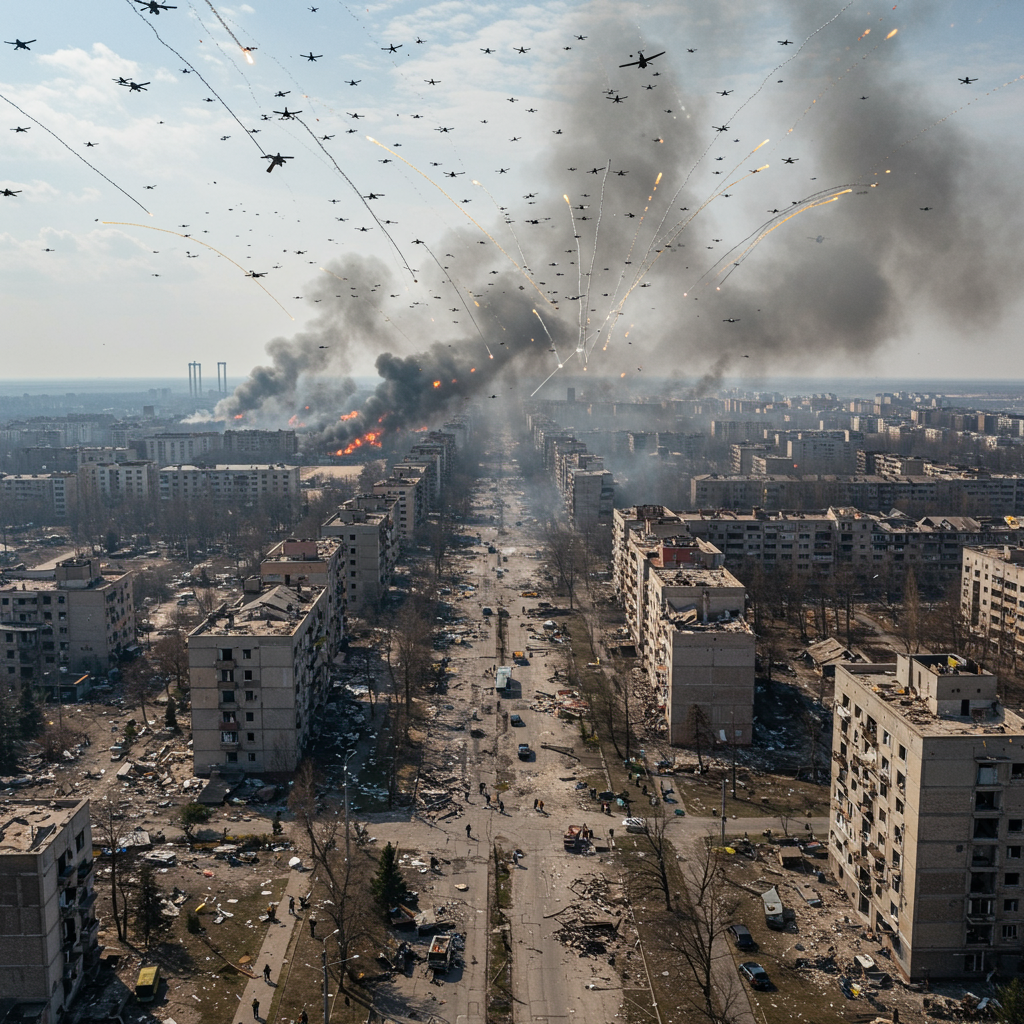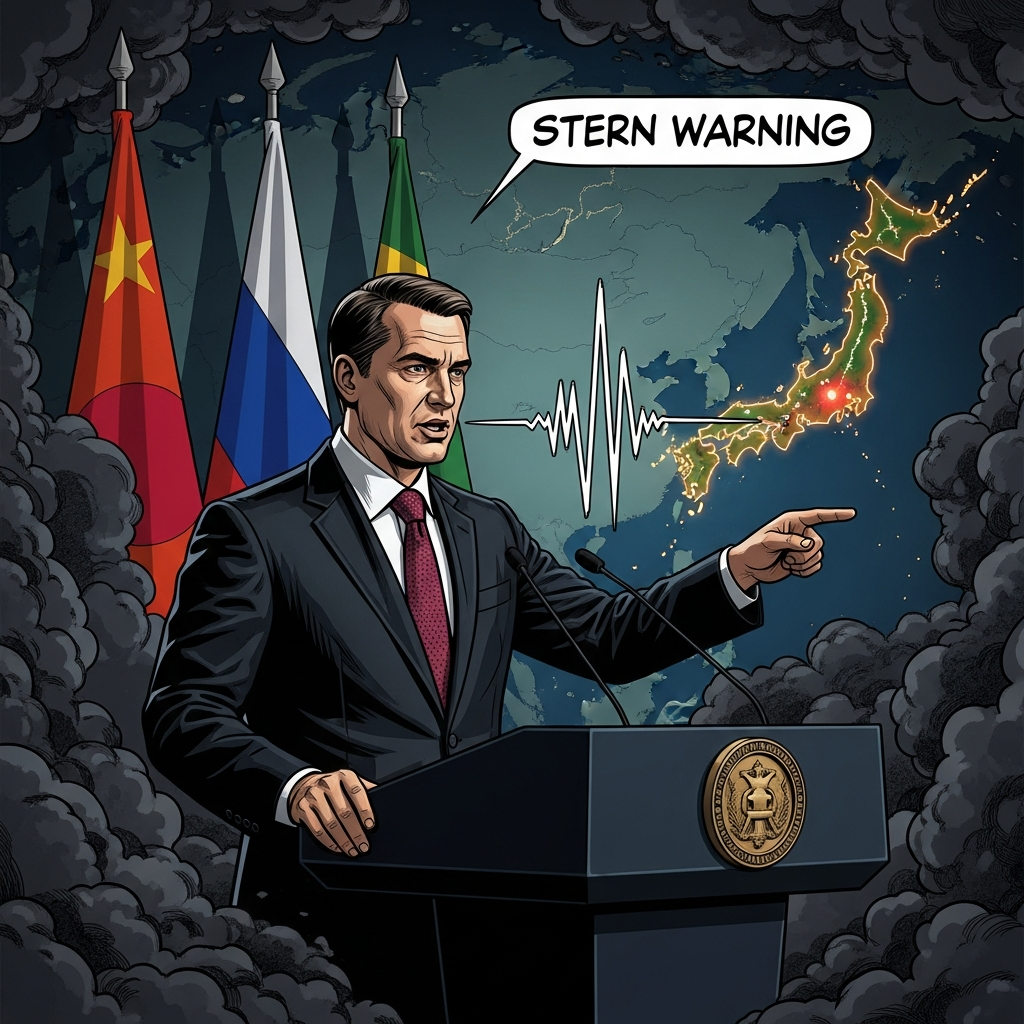ukraine recently endured what officials described as Russia’s most massive air assault since the full-scale invasion began over three years ago. This devastating bombardment, involving hundreds of drones and missiles, targeted regions spanning the country, including areas far from the front lines rarely affected by such intensity. The unprecedented scale of the attack on June 29-30, 2025, highlighted Moscow’s unwavering commitment to its military campaign and raised critical questions about the future of the conflict and Ukraine’s defense needs.
The widespread strikes inflicted casualties and caused significant damage to civilian infrastructure, underscoring the indiscriminate nature of modern aerial warfare. ukrainian officials immediately called for urgent reinforcement of air defense capabilities, emphasizing that such large-scale attacks demonstrate Russia’s ongoing intent to prolong the conflict unless met with robust international support.
Scale and Scope of the Aerial Onslaught
The sheer volume of munitions unleashed in this single weekend barrage was staggering. Ukrainian air force communications head Yuriy Ihnat reported Russia fired a total of 537 aerial weapons. This included 477 drones and decoys, alongside 60 missiles of various types. Authorities described this combined attack as the “most massive airstrike” based on the sheer number of projectiles used since the invasion started in February 2022.
Ukrainian defenses worked tirelessly to counter the onslaught. They reported successfully intercepting 249 of the projectiles. Another 226 were reportedly “lost,” likely succumbing to electronic jamming or other countermeasures. Despite the high interception rate, the overwhelming number of incoming weapons severely strained Ukraine’s existing air defense resources. These attacks reached deep into Ukrainian territory. Targets included critical sites and urban areas in Western Ukraine, a region historically less impacted than eastern or southern front-line areas. Cities like Lviv and Drohobych experienced explosions and power cuts. Attacks also struck numerous other regions, including Kyiv, Poltava, Mykolaiv, Dnipropetrovsk, Cherkasy, and Ivano-Frankivsk, demonstrating the national scale of the bombardment.
Devastating Human Impact and Infrastructure Damage
The massive aerial assault resulted in tragic loss of life and widespread destruction. Reports confirmed several civilian casualties across multiple regions. Officials in Kherson, Kharkiv, and Dnipropetrovsk each reported three people killed in drone strikes. Another person died from an airstrike in Kostyantynivka.
Beyond direct strikes, shelling connected to the broader escalation led to further deaths. A man died from Russian shelling in the city of Kherson, and responders found the body of a 70-year-old woman under rubble after shelling hit a nine-storey building in the Zaporizhzhia region. During the attacks, a 72-year-old man was tragically killed when a drone struck his car in the Dnipropetrovsk region.
The strikes caused extensive damage to residential areas. An apartment building in Smila was hit. A drone attack on an industrial facility in Drohobych ignited a large fire and disrupted electricity for parts of the city. Kyiv residents sought shelter in metro stations as air raid sirens blared across the capital, reporting sounds of machine-gun fire and explosions.
Military Implications and Strategic Context
The scale of the attack also impacted Ukraine’s military assets. A Ukrainian F-16 warplane, one of those supplied by Western partners, crashed after sustaining damage during aerial combat. The pilot, Lieutenant Colonel Maksym Ustymenko, reportedly managed to shoot down seven aerial targets before his aircraft was hit. Tragically, he did not have time to eject and was killed. This incident marked the third reported loss of a Ukrainian F-16 since the jets entered service.
This unprecedented bombardment occurred just days after Russian President Vladimir Putin had reportedly suggested Moscow was ready for a new round of direct peace talks in Istanbul. Ukrainian President Volodymyr Zelenskyy viewed the massive barrage as a clear message contradicting any readiness for peace. He asserted that Moscow would “not stop as long as it has the capability to launch massive strikes.” Zelenskyy highlighted the relentless nature of recent attacks, noting that in the week preceding this major assault, Russia had launched over 1,270 drones, 114 missiles, and nearly 1,100 glide bombs.
Ukraine interprets Russia’s intensified strategy as a deliberate attempt to wear down its air defenses, exhaust its Western-supplied weapons arsenals, and apply unrelenting psychological pressure on the civilian population. The attacks also serve to test Ukraine’s defenses and response capabilities.
Ukraine’s Response and Calls for Support
In the wake of the attack, President Zelenskyy reiterated urgent calls for increased Western military aid. He specifically requested additional Patriot missile batteries from the United States to strengthen Ukraine’s air defense network, describing better air defense as the most effective way to protect lives. He emphasized the critical need for leadership, political will, and continued support from the U.S., Europe, and all international partners.
The reality of the prolonged and intense conflict has also prompted difficult strategic decisions for Ukraine. The country announced it had begun the process of withdrawing from the 1997 Ottawa Convention, which bans anti-personnel landmines. Ukrainian lawmaker Roman Kostenko justified this move by stating it was necessary due to the reality of the war. He pointed out that Russia is not a party to the convention and is reportedly using mines extensively against Ukrainian military personnel and civilians, putting Ukraine at a disadvantage if it remained bound by the treaty. This decision, while seen as a pragmatic necessity by Kyiv, reflects how the nature of the conflict is challenging international humanitarian norms.
Eroding Norms and the Future of Conflict
Experts like those at AOAV (Action on Armed Violence) have highlighted that the use of explosive weapons in populated areas, exemplified by this massive attack, is inherently indiscriminate and results in predictable, devastating civilian harm. They note that such actions appear to continue with impunity despite international condemnation. The persistent bombing of cities and civilian infrastructure underscores concerns that the war is not only a contest for territory but also a battle of values, potentially eroding international norms designed to limit the worst impacts of war.
Russia has claimed its overnight strikes targeted Ukrainian military-industrial complex sites and oil refineries, while also reporting the interception of Ukrainian drones. Meanwhile, Ukraine continues to highlight Russia’s alleged reliance on arms supplies from partners like North Korea, a connection underscored by recent high-level visits between Moscow and Pyongyang. The ongoing conflict serves as a testing ground for evolving drone warfare tactics and other new weaponry for both sides.
The devastating June 29-30 bombardment serves as a stark reminder of the conflict’s brutal reality. It reinforces the urgent need for strengthened air defenses in Ukraine and highlights the broader challenges facing international humanitarian law in the face of prolonged, high-intensity warfare targeting civilian areas.
Frequently Asked Questions
What made this attack the “largest” compared to previous ones?
Ukrainian officials described the June 29-30, 2025, attack as the “most massive airstrike” because of the sheer volume of projectiles used. Russia reportedly fired a total of 537 aerial weapons, including 477 drones and decoys and 60 missiles. While other significant attacks have occurred, this specific combination of drones and missiles exceeded previous single-event barrages since the start of the full-scale invasion in February 2022, based on Ukrainian air force assessments.
Where were the main targets of this massive Russian air assault?
The massive assault targeted a wide range of locations across Ukraine, demonstrating a national scope. Notably, the attack reached deep into Western Ukraine, a region typically less affected than the front lines. Cities and infrastructure in areas including Lviv and Drohobych were hit. Strikes also impacted the capital, Kyiv, as well as Poltava, Mykolaiv, Dnipropetrovsk, Cherkasy, and Ivano-Frankivsk regions. Russia claimed it targeted Ukrainian military-industrial complex sites and oil refineries.
How did this attack impact Ukraine’s military and civilian population, and what is Ukraine requesting in response?
The attack resulted in multiple civilian casualties and injuries across several regions, with reports of fatalities from both drone strikes and associated shelling. It caused extensive damage to residential buildings, including apartment blocks, and industrial facilities, leading to fires and power outages. For the military, a Ukrainian F-16 fighter jet was lost, resulting in the pilot’s death. In response, President Volodymyr Zelenskyy strongly called for urgent and increased Western support, particularly requesting more Patriot missile batteries from the United States to enhance Ukraine’s critical air defense capabilities.




